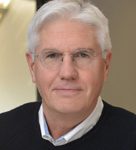 By Stephen Shaw
By Stephen Shaw
For thirty years the Air Miles Reward Program has ruled the skies in Canada. Its familiar blue membership card can be found in the wallets of roughly 10 million Canadians. But in recent years Air Miles has lost altitude. Several high profile sponsors have exited the program, most notably Sobeys, the second largest supermarket chain in Canada, which this past summer switched over to the newly revamped Scene program, now called Scene+. The switchover followed the move by Sobeys owner, the Empire Company, to team up with Cineplex and Scotiabank as a joint owner of the coalition loyalty program.
The Scene program was launched in 2007 as a way for Cineplex and Scotiabank customers to earn rewards going to the movies and buying snacks. But exactly one year ago Scene merged with the Scotia Rewards program to offer members many more ways to earn rewards. Now members can not only rack up points on their movie-going and credit card purchases, but they can also take advantage of earning opportunities through the online cashback company Rakuten and by booking travel through Scene Plus Travel powered by Expedia. And that’s just the start. Next summer Home Hardware stores will be joining the program, making Scene+ a formidable contender for front-of-the-wallet status.
Historically coalition programs have floundered everywhere in the world but Canada. Thanks in part to urban density, the existence of strong national brands in high volume earning categories like groceries, banking, fuel and retail, and an affinity amongst Canadians for loyalty programs (the average household has 13 memberships), the loyalty market in Canada is thriving. It is estimated to be worth $4.4 billion and is expected to grow at a compound annual growth rate of 11 percent over the next four years. No wonder Scene has elected to transform itself into a full fledged coalition loyalty program, determined to grow its 10 million member base.
The argument in favour of a coalition versus a proprietary program has always been strength in numbers, giving members greater “earning velocity”. But a careful balance has to be struck between the perceived value of those rewards and the effort required to obtain them. Attempts to devalue that currency – or make it harder to redeem points – or rely on “breakage” (that is, unredeemed points) to inflate the bottom line – can backfire (as Air Miles discovered when it tried to put a 5-year expiry on points, igniting a fierce consumer backlash that forced the company to back off). Plus, the various category sponsors have to be deftly managed as well.
Category exclusivity promises have to be honoured – conflicting strategic priorities resolved – proof supplied that members are buying more, more often. Not to mention the technical complexity of converting purchases across many different payment systems into variable points currency and then personalizing member offers based on their particular affinities.
Matthew Seagrim, the strategic architect behind the transformation of Scene1, is intimately familiar with all of those challenges. For seven years he worked at former Aeroplan owner Aimia in charge of product strategy. And for the past seven years he’s been in charge of program development at Scene. His efforts are being rewarded – a staggering 65 percent growth in membership over that time, and recognition as one of the top-ranked programs in the country. But Scene is on a mission to create a next generation program – one that goes beyond discounts to offer members even more of a rewarding experience.
Stephen Shaw: As a mechanical engineering graduate, did you ever imagine that you’d be running one of the largest loyalty programs in the country?
Matthew Seagrim: I certainly never did. I made a decision to study engineering hoping to build spaceships and had the good fortune to do really neat projects like working on designs for the Mars Pathfinder Rover. At the end of undergrad, I came to Toronto because there was an opportunity in management consulting, which struck me as a really interesting field. As it happened, Canada Trust was planning to move their head office from London, Ontario, to Toronto. One of my colleagues at the consulting firm approached me and said, “Look, they’re trying to build a team. They’re trying to scale this business. They’re trying to relocate it.
They’ve launched a really interesting partnership with Capital One.” Canada Trust would provide Capital One with back-office support, while Capital One would bring their world-class thinking around analytics and data-driven marketing, capabilities that were leading edge at that time. It just seemed like a really interesting opportunity. So I joined this very small team that was in startup mode, trying to scale the leadership in the Toronto office, and it was fascinating. We learned an enormous amount over a short period of time about how to leverage data, to personalize offers, drive adjudication, make smarter banking decisions, and as a team, we were able to learn from this advanced analytics group at Capital One.
SHAW: As I recall the whole field of customer analytics was just beginning to mature around that time in the late 1990s led by the big banks and card marketers.
SEAGRIM: Yeah, it was an industry that was in transformation, and there were some leaders in that space who were using analytics to drive personalization in a way that organizations had never done before. And because our team was so small, everyone was wearing many hats. I don’t think there were many other places in the country where you could be responsible for credit card acquisition while also helping to set the adjudication policy and the line assignment policy and the income verification policy. Usually, those duties are quite separate. So, it was a really interesting place to be, and it set me on a path for the next ten years working in product development, in one-to-one marketing, in product management, in financial services.
At Canada Trust I worked on a number of new co-branded loyalty products, did loyalty co-brand design when I moved over to Citibank for a few years, and then ultimately, moved to PC Financial when they were still in growth mode, and again found myself in this extraordinary team of people, small, really committed, passionate about what they were doing, feeling like we were changing the world by creating something fundamentally new, on a rocket ship, just driving incredible growth and disrupting the industry. And that led me to Carlson Marketing, which was later acquired by Aimia, allowing me to broaden into other areas of consumer-focused marketing. So, I did a tremendous amount of product development with most of the major banks across the country, getting exposure to card-linked loyalty through work Aimia was doing in that space, and then also an opportunity to work internationally, building out product concepts in Mexico with Club Premier, and launching a product in Thailand with Thanachart Bank.
SHAW: So, you don’t regret giving up your dream of building rocket ships?
SEAGRIM: Well, I think we’ve been building one for the last number of years. And its velocity has been accelerating.
SHAW: I guess so! You were at Aimia just prior to joining Scene. But you left there a few years before Air Canada decided to repatriate Aeroplan2. Did you see the writing on the wall at that point?
SEAGRIM: When I left, it wasn’t inevitable, but one could see there were lots of reasons it made sense. The airline was looking at ways they could engage directly with their customers. And the arrangement they had with Aimia limited the value they were getting from the program. So, when it was finally announced it felt like the right thing to do. In many ways, it was the end of an era for Aimia. But it seemed like the best outcome for everyone.
SHAW: So you left to join Scene – I’m going to call it 1.0 – as Managing Director, and at the time, the program was simply a way to collect points by going to movies and buying popcorn. At what point did it start to shift from an entertainment to a lifestyle program?
SEAGRIM: That was really part of the conversation when I joined in 2015. When I arrived it was already a well-loved program. Scene was created as a joint venture between Cineplex and Scotiabank to create something fundamentally new. Cineplex wanted additional information on who their customers were, while Scotiabank was looking to attract a younger demographic. When they started the program in 2007, it immediately took off. By the time I arrived, it was in 38 percent of households across the country. So it had established a really solid foothold. But the challenge was, how do you take it to the next level?
We recognized that we needed to work on our positioning. There were some nascent partnerships that were already in place but they just felt awkward: so it was hard to make sense of our story. And that led us to do some really profound branding work, trying to understand what the program’s role was in the lives of its members. As we started talking to our members we heard all these stories about how it was helping them in their lives – such as people who told us that the program was how they went on their first date with the person they later married. We had grandparents who told us that this was the way they could have a dinner out every month with their grandkids. We had families tell us it was the only way they could afford to do some of the things they wanted to do in their lives. And the more we dug into it, the more it became clear that the reason Scene had such a strong member attachment was more than the reward, more than the transaction, it was that we were enabling people to spend time with friends and family.
Once we understood the role that the program actually played in people’s lives, it allowed us to reposition and rebrand the program. So we went from being an entertainment program in 2015 to being all about encouraging togetherness in 2016. And that was the spark that helped us to expand our partnerships in dining, to partner with the NBA, to build out a music brand. It allowed us to really take the program to a place where we could credibly be more than we had been before. And that allowed us by late 2019 to grow past 10 million members. At that point, we were in 53 percent of houses across the country. So, really meaningful growth out of this one key insight into the role that we played in people’s lives.
SHAW: So the inflection point was this unifying idea of family togetherness?
SEAGRIM: That’s exactly right. And beyond allowing us to partner with more organizations, it really gave the team a sense of profound meaning about what we were doing. It ignited the imagination of our marketing teams and our agencies. And, quite importantly, when movie theaters and restaurants were closed during COVID, we still had this meaningful message that we could communicate around “better together even when we’re apart” that would not have been possible otherwise.
SHAW: You launched expansion of the program last year – Scene 2.0, can I call it? – to extend the earn and burn opportunities. Can you take me through the thinking around your partnership strategy?
SEAGRIM: I have to take a step backwards to explain how this all came together. Scotiabank, prior to this summer, was a 50 percent owner of Scene. We’ve now welcomed Empire as a one-third owner3. So the three owners each have a third. But in 2019, Scotia was looking at not only their ownership in Scene but also at their own proprietary program, Scotia Rewards, and they made the strategic decision to go all in on Scene. And so, what we ended up doing at the end of last year was merge the two programs together, and that’s what allowed us to launch Scene+. Scene moved from being entertainment only to becoming a broader lifestyle program with more ways to earn and redeem points with a series of partnerships.
SHAW: Is the positioning still around togetherness, or has that had to evolve as a result of the relaunch?
SEAGRIM: Yeah, it’s had to evolve. But we’re trying to do it in such a way that we don’t lose a lot of that equity we’ve built in the brand position. There’s so much of what we’re doing that’s still about doing the things that you love with the people that you love.
SHAW: You have this tripartite alliance now across three entirely different businesses. Is it tough to get strategic alignment around the goals of the program?
SEAGRIM: There’s been a lot of work with the Empire leadership team and our board of directors around everyone’s aspirations for the program. And what’s been wonderful is how committed everyone is to the same goals. Everyone’s interested in building a program that they can be proud of. Everyone’s interested in building a program that builds real value for their customers. Everyone is fully committed to creating something that allows them to unlock the power of insights across this ecosystem that we’re building. So I’d say at the macro level, we’ve got tremendous alignment. And it was really important in the early days of building out this strategy to make sure that we clearly understood the strategic priorities of each organization independently, and that we could have one North Star to rally around as we were building something greater together.
SHAW: Did Sobeys see this as a way to scale its loyalty program in a way that it couldn’t have done on its own?
SEAGRIM: I think Sobeys saw the commitment from Cineplex and Scotia to build something great together. They saw momentum in the program and a level of engagement with the brand that was really strong. We also had a really strong commitment as an organization to creating value for our owners and our partners. But this was a big decision. It was a very strategic move by a very large and powerful organization in a highly competitive market. All of us at Scene are humbled by the fact that they’ve made this decision, but we also keenly feel a great responsibility. Sobeys is in a highly competitive market, Scotia is in a highly competitive market, Cineplex is just coming out of COVID, trying to make sure their business is going to thrive going forward. And we have a part to play in helping them.
SHAW: Rakuten is a huge multi-retailer cashback program. In some ways you can almost consider them an indirect competitor. Why partner with them?
SEAGRIM: We felt it was a really important partnership to help us broaden the appeal of the program, and also to bring in an e-commerce partner that allowed people to have more opportunities to find value in the currency. Rakuten has done an exemplary job of building strong relationships with their customers. The feedback they get from their customers is overwhelmingly positive, consistently, and we felt that we had a lot of alignment between our brands and in the objectives we were trying to pursue. So, it really did feel like a win-win in striking a partnership with them.
SHAW: Coalition programs have floundered pretty much everywhere in the world but here. Are Canadians just more receptive to these types of programs? Or is it the fact that we have national brands in almost all of the key categories?
SEAGRIM: We’ve not only got more programs per person than many countries in the world but more engaged participation per person. One of the key differences is our partners want to be part of something bigger instead of going it alone. They recognize the advantages of instantaneous scale, the opportunity to tap into network effects, to shift brand preference from their next nearest competitor to themselves. But we’ve also very deliberately gone into these conversations with a view to maximizing the data that we can make available to our partners, to helping our partners build their own ability to market to their customers.
SHAW: The economic model is interesting, too. Certainly, Air Miles has made a lot of money on breakage. But you’re actually trying to achieve financial goals that align with your owners as opposed to operating purely as an independent business unit trying to maximize your bottom line.
SEAGRIM: Yeah, our structure has been a key part of our success. We don’t have an external shareholder to please. We’re all about creating value for our members, owners and for our partners. We haven’t had to make the choices that some other organizations have had to – reduce the dividend to a member or reduce the value of a reward, or intentionally drive-up breakage. We take quite the opposite approach. We’re quite proud of having very low breakage rates and of delivering really high value to our customers in the market. We’ve long considered ourselves to be more of a customer engagement platform than a loyalty program, per se. What we’re trying to do is facilitate deeper relationships between our members and our owners and partners. And the best way we can do that is to maximize the value exchange between the two and to reduce friction in the middle.
SHAW: You have direct competition with other coalition programs, but there’s also the threat of cannibalization from proprietary programs – and from the growth of retail networks with their own ecosystem of suppliers and partners.
SEAGRIM: When I think back to 2018, we had three versions of the database, we had different ways of calculating and recognizing points, we had incomplete views of customers. But now we have a more holistic and valuable view of a member’s behavior and their participation in the program, encompassing grocery purchases and nights out with the family and banking behavior. And that single, consolidated view is a big advantage over a proprietary program.
SHAW: At this point, the earn and burn opportunities are transactional in nature, discounts and freebies, that sort of thing. Are you looking at some point down the road at other forms of rewards? I’m thinking of experiential rewards as an example.
SEAGRIM: We are pretty uniquely positioned with the assets that we can bring to the table. There’s a world of opportunity for us to take advantage of with all our partners. I think it’s worth noting that Scene+ as a program is only a year old. We are still very much in transformation mode. There’s a lot more building to come.
SHAW: I suppose that’s where analytics can help, yielding insights that lead to innovation and transformation. How are you set up to support that?
SEAGRIM: Over the last two years we’ve been investing significantly in our analytics team, in our engineering team, in building out new dashboards and new reporting, so that we can meet the needs of the expanded program. Now that we are playing such a significant strategic role for all of our partners, we have to start creating different forms of insight. In the day-to-day business, we’re always focused on overall program metrics, engagement in the program, satisfaction, NPS, the typical growth metrics. Coming out of the pandemic, we had to shift our focus very strongly to reactivation, to ensuring that we’re being relevant in our communications, that members were satisfied with the rewards, and being really focused on whether the program was making members more likely to continue doing business with our partner brands.
With Sobeys now rolling out across the country, we want to make sure that our members are aware of the benefits, that they understand the program, that they’re having a smooth enrollment experience, trying to track things like how long does it take before the first transaction. Are you happier now than you were before, either with the old Scene program or with the program that Sobeys was in before? These are the things you’ve got to measure very closely at this point in our transformation. And in a few months, we’ll be in a very different place again.
SHAW: You have a one-size-fits-all program design right now. A natural evolution is to tailor the program to different segments within your base, particularly given the rich array of data that you’re collecting. Is that part of your vision?
SEAGRIM: The answer is emphatically yes. But I also think it’s really important for us to stay focused on one of the things that has made Scene strong over time. We have had almost a manic focus on simplicity, and that’s been really important for us over the last 15 years to make sure that the program is easy to understand, that when someone signs up they’re not trying to comb through terms and conditions and reward grids and trying to figure out what they get by signing up. It’s critically important that the program be understandable, that it be clear, that the value prop be understood in seconds. And I’d say we’re not all the way done. We’ve still got some things that we want to make even simpler. But to answer your question, while it may look like it’s one size fits all, there’s a tremendous amount of work between amongst the partners to make sure that we’re delivering highly personalized, highly relevant content and offers that really speak to an individual and their needs.
SHAW: Gamification appears to be a growing trend in reward programs to create greater engagement. Blockchain is a potential delivery mechanism for currency. And there’s the metaverse, of course. What’s your perspective on these new technologies?
SEAGRIM: We’ve seen many organizations in this space be very successful at leveraging game mechanics to drive behaviors. We’ve certainly looked at Blockchain and what Starbucks is going to be doing with the Odyssey Program4 that they’ve announced. We’ve had many organizations put forward proposals to do redemptions for cryptocurrencies and a few have gone to market with crypto rewards. Our members’ interest has waxed and waned depending on the value of cryptocurrencies at the moment. Where I’m more interested is where the industry is going on leveraging Blockchain as a tool, and from my point of view that starts to become really interesting when you start talking about member-to-member points transfer or points pooling or cross currency exchange. There’s lots more still to be learned in this space and how it can best be utilized. And metaverse? I think it’s a big, “We’re not sure at this moment.”
SHAW: You and everybody else. What’s the immediate path ahead for the program?
SEAGRIM: The growth with Sobeys has been extraordinary. We’ve brought in 150 percent more members in the last two months than our best year ever – growth that is unprecedented and awe-inspiring. And we’re not done with the rollout. We’re really in the early weeks. And then next summer we’re going to be adding Home Hardware to the business, with a thousand locations coast to coast to coast. And when they join the program, we will have a meaningful presence in communities of every size across the country.
Stephen Shaw is the Chief Strategy Officer of Kenna, a marketing solutions provider specializing in delivering a more unified customer experience. Stephen can be reached via e-mail at sshaw@kenna.ca
- We just need to make sure that we’re laying the track out sufficiently ahead of ourselves so that we can maintain the speed and the momentum to achieve our vision without going off the rails. We’re on a journey right now. We’ve been in construction for the last two and a half years. For us to be successful we need to deliver world-class capabilities. And that encompasses analytics, it encompasses data science, it encompasses our ability to maximize our level of insight. And so, there’s a tremendous amount of capability still to be built to make sure that we can deliver against our vision. But we’re feeling like we’ve got a great path ahead.
- Management of the Scene+ program is in the process of transitioning to Tracey Pearce who was appointed President of Scene in May 2022.
Air Canada launched a new loyalty program to replace Aeroplan in 2020. Aimia subsequently became an investment holding company. - In June 2022, Empire Company joined the partnership and added its supermarket chains, including Safeway and Sobeys, to the Scene+ program.
- Odyssey is a Web3 offering by which Starbucks Rewards members can purchase and trade limited-edition NFTs to secure rewards benefits and earn digital badges called “journey stamps” that can be redeemed for experiential rewards like virtual espresso-martini-making classes or international trips.




